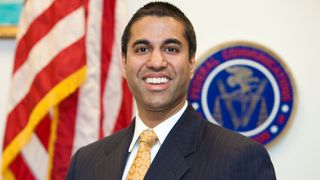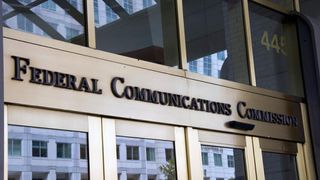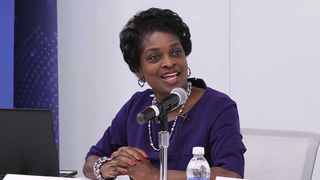FCC Opens Inquiry Into Freeing Up More Wireless Broadband Spectrum


The FCC has unanimously approved a notice of proposed rulemaking (NPRM) looking into opening up the 2.5-GHz band for wireless broadband, but not without pushback from some educational broadband services (EBS) that use the band.
Commissioner Mignon Clyburn, who is exiting the commission, did not participate so the vote was 4-0.

The item was billed as creating "more efficient and effective use of 2.5-GHz spectrum by increasing flexibility for existing EBS licensees and providing new opportunities for educational entities, rural Tribal Nations, and commercial entities to access unused portions of the band."
EBS, formerly Instructional Television Fixed Service, or ITFS, was used in the 1960s for closed-circuit broadcasts to educational institutions, but was rebooted in the early 2000s and pointed toward broadband.
The new NPRM will allow stakeholders to weigh in on the proposal before the FCC holds a final vote.
The effort is part of the FCC's prime directive these days of opening up more spectrum, including for unlicensed, to satisfy the appetite of a spectrum-hungry IoT/5G world.
EBS licensees can already lease excess spectrum for mobile broadband, as most do, but the NPRM could cut out the EBS middleman with those "new opportunities" for commercial entities by allowing EBS to transfer the license to private entities, not just lease the spectrum, which the FCC says is a win-win.
Broadcasting & Cable Newsletter
The smarter way to stay on top of broadcasting and cable industry. Sign up below
Voqal, a consortium of educational services that hold 11 of those EBS licenses, said the FCC got it right the first time, when it reserved the band for education.
While Voqal said it supports modernizing EBS rules and expanding 5G and boosting rural broadband, it should not come at the expense of a public asset.
"We are deeply concerned, however, that the FCC’s proposed rules will ultimately undermine this unique public education resource," adding that it is the highest, best use of the spectrum.
"EBS is a public education resource that should not be auctioned off to the highest bidder, without regard for the impact on educators and the public," Voqal said of the NPRM.
The auction reference is to the NPRM's request for comment on whether an incentive auction should be held to determine the highest, best use of the spectrum.

FCC chair Ajit Pai said the agency was putting the 2.5-GHz asset to work for 5G, including by the chance for EBS incumbents to get licenses in a priority filing window, then auctioning the rest.
Commissioner Brendan Carr pointed out that about half of the EBS spectrum is currently fallow, and 90% of the spectrum is being leased to other entities. "Through this notice, the commission begins to step away from central planning and towards letting the marketplace determine the band's highest use," Carr said.
Commissioner Michael O'Rielly said the EBS band has morphed into a commercial broadband play, and the FCC should stop pretending the band is about interactive learning. He applauded the notice, but said he was troubled about proposing filing windows for preferred entities so they can get free spectrum, then flip them.
He said he was pleased that Pai agreed to ask questions about the downside of priority filing windows, and added he would support the item.
Commissioner Jessica Rosenworcel, arguably the FCC's most passionate defender of educational broadcast and broadband services, supported looking at ways to better use the band.

“Today we begin a rulemaking to release additional 2.5-GHz spectrum to the public, and in doing so, seek comment on how we can make more efficient and effective use of the airwaves reserved for the Educational Broadband Service," she said. "This is long overdue — and has my support."
But she also suggested the FCC should think big, and out of the box.
"To tackle [the student connectivity] challenge, we need some daring," Rosenworcel said. "We need to move past timid proposals that double down on the status quo. To this end, we need to use this proceeding to explore creative solutions. What if we repurposed the Educational Broadband Service through an incentive auction? What if we expanded the opportunities for spectrum use by auctioning not just licenses in inventory but through overlay rights? Then what if we took the revenue from this effort and used it to support new initiatives to bridge the Homework Gap — to ensure every child has the internet access they need for schoolwork.”
She said it would be a way to bridge the homework gap, honor EBS's past and update it for the future.
Contributing editor John Eggerton has been an editor and/or writer on media regulation, legislation and policy for over four decades, including covering the FCC, FTC, Congress, the major media trade associations, and the federal courts. In addition to Multichannel News and Broadcasting + Cable, his work has appeared in Radio World, TV Technology, TV Fax, This Week in Consumer Electronics, Variety and the Encyclopedia Britannica.

